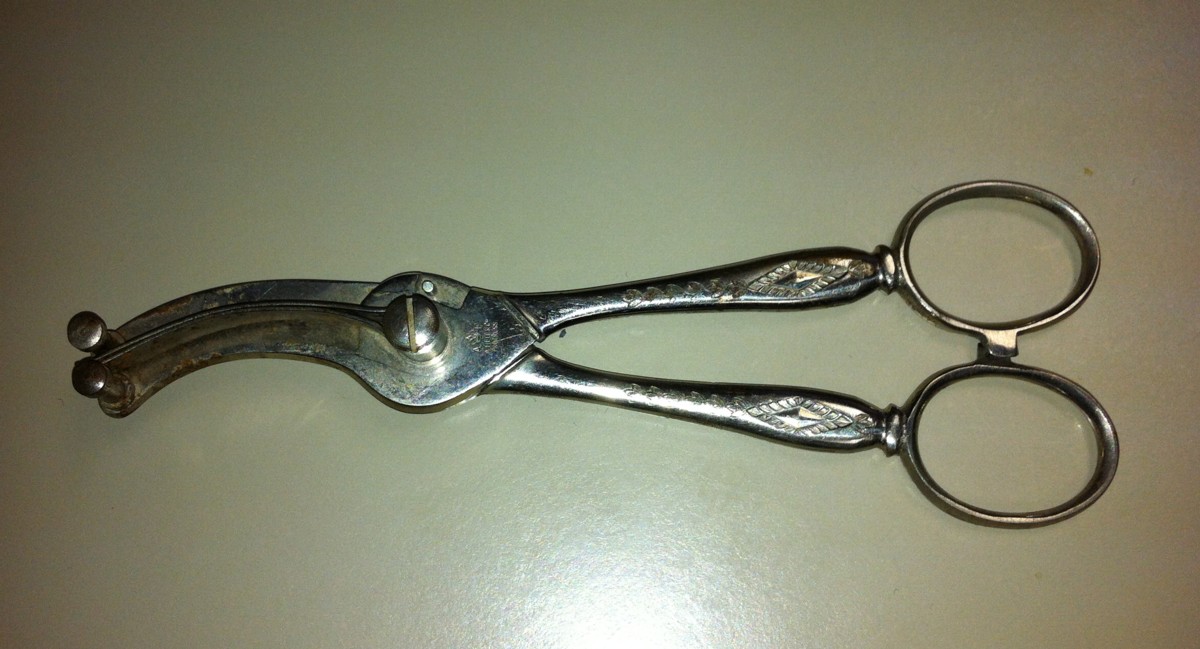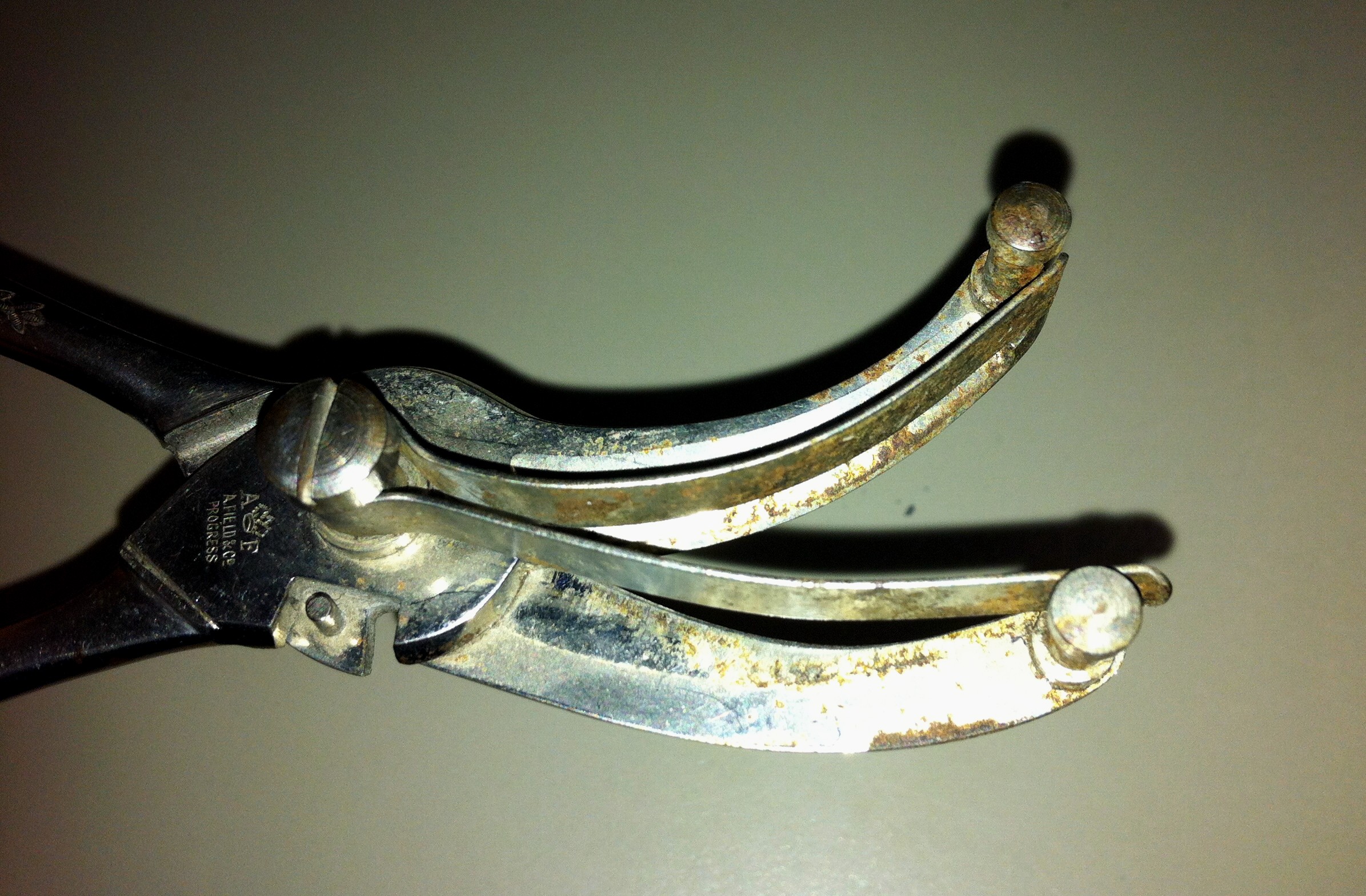by Alethea Drexler, archives assistant
The past few months have brought us several donations that were heavier on artifacts than they were on paper. That’s a little unusual for an archive but not necessarily a bad thing. Honestly, artifact donations are often very entertaining.
The heirs of a Fort Worth-area nurse named Senorita (that was her first name) Green Walden brought us some photographs and a modest but choice collection of memorabilia, including a lovely navy blue and red wool cape that the home seamstress side of me is dying to trace and copy.
Mrs. Walden graduated from nursing school in 1948. In her graduation photograph, all of the new nurses have round scissor handles peeking out of their uniform pockets.
The collection did not come with a lot of documentation, written or hearsay, but it did include a curious pair of scissors:
They’re marked as having been made in Germany, possibly by the English-based firm Alfred Field, which went out of business in the early 1940’s. Since she didn’t graduate until the late 1940’s, we’re not sure how she acquired them. We do wonder, though, if they’re the scissors in her pocket at graduation. The decorated handles suggested to us that they might have been symbolic more than utile.
The decorated handles are very unusual for medical implements, since decoration and moving parts are difficult to clean properly. If these were used at all, they likely would have been used externally.
That did not tell us, though, what kind of scissors they actually are. They have both a curved cutting blade and what seems to be a leaf-style clamping mechanism:
. . . and there are small hooks on the handles so the scissors can be locked closed.This brought me back to the old problem of not being able to do adequate research on something when I didn’t know what it was or how to search for it. This is when I have to call on the experts: I emailed a nursing museum.
Jane Early at LaSalle University’s Museum of Nursing History in Philadelphia, agreed with our thought that the scissors might be ceremonial more than functional, but she said she and her colleagues had never seen any like them. She graciously did some asking around and then emailed us back again to suggest that they might be umbilical-cord scissors, which would have to cut and then clamp.
So . . . the possible answer now is “umbilical cord scissors”, but our research is still coming up empty except for the efforts of the Museum of Nursing History.
Now it’s your turn, readers. Has any of you seen scissors like ours?

